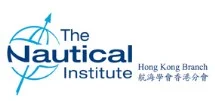maritme labour convention
More than thirty members and guests of the Hong Kong branch gathered on a stormy Friday evening in May to hear Captain Sanjiv Sehgal of Vanguard Q&S Inspection Inc. speak about the challenges of the new Maritime Labour Convention (MLC).
Described as ‘the seafarers Bill of Rights’, MLC will apply to all ships when it is ratified by 30 member states representing 33% of world tonnage. With the tonnage requirement already having been fulfilled, ratification from four more flag states will ensure that MLC enters into force twelve months later, so it may be closer than people think.
Capt. Sehgal believes that good shipowners will welcome the Convention because it will help create a level playing field for them and will make seafaring an attractive career option for future generations. Interestingly, he pointed out that not much in the MLC is new – it consolidates no less than 68 maritime labour instruments dating back to 1920, many of them in a revised and updated form. Since most of the previous conventions were never ratified by flag states, they were never implemented and hence the industry did not benefit from them.
There is a lot more to MLC than meets the eye. All shipowners, managers and manning companies will be affected in one way or another and will need time to prepare themselves, their seafarers and ships. Twelve months may not be sufficient for MLC certification of vessels, so the matter may be more urgent than they realise.
Captain Sehgal estimates that shipowners, managers and manning companies will need at least three to six months to prepare for the Convention, whilst amendments to employment contracts may take even longer. Bearing in mind that all ships will be required to implement arrangements at the same time, there is likely to be a bottleneck which will make the rush to ECDIS seem tame by comparison.
He also pointed out that the definition of the words ‘seafarer’ and ‘shipowner’ in MLC is problematic, and will have a real impact on the way the shipping industry operates. Since Flag States cannot unilaterally take decisions on many key issues of the MLC, it is up to shipowners to take the initiative and highlight issues which are likely to impact their ships before the national laws are framed. Dispensations and exemptions may not be easy to obtain after the laws are framed and implemented.
Under the MLC, shipboard inspections will cover many areas which do not currently feature in Flag State or Port State Control inspection regimes. These include verifying that seafarers have with them their employment agreements, are aware of the contents, can demonstrate good hygiene and housekeeping practices and know the company’s complaint handling procedure. Serious deficiencies in a PSC inspection may lead not just to delays and detentions but also to follow-up visits at subsequent ports to verify the corrective action.
He also pointed out that crew training will be important to empower the seafarers in dealing with MLC related issues on board, and enable them to demonstrate compliance. As examples, he brought out the links between MLC and existing IMO requirements under STCW and the ISM Code.
Since MLC is rather vague in places, and Flag States may not provide much clarity on what are considered ‘acceptable’ shipboard conditions, there are bound to be differences in interpretation. This is something that shipowners (and seafarers) need to realize and give thought to in advance. Good luck with that one, gentle reader.
The talk was followed by a lively question and answer session, and discussions continued at the buffet afterwards. Members were grateful to Capt. Sehgal for his timely presentation, but it was a sobering evening.
Alan Loynd FNI

